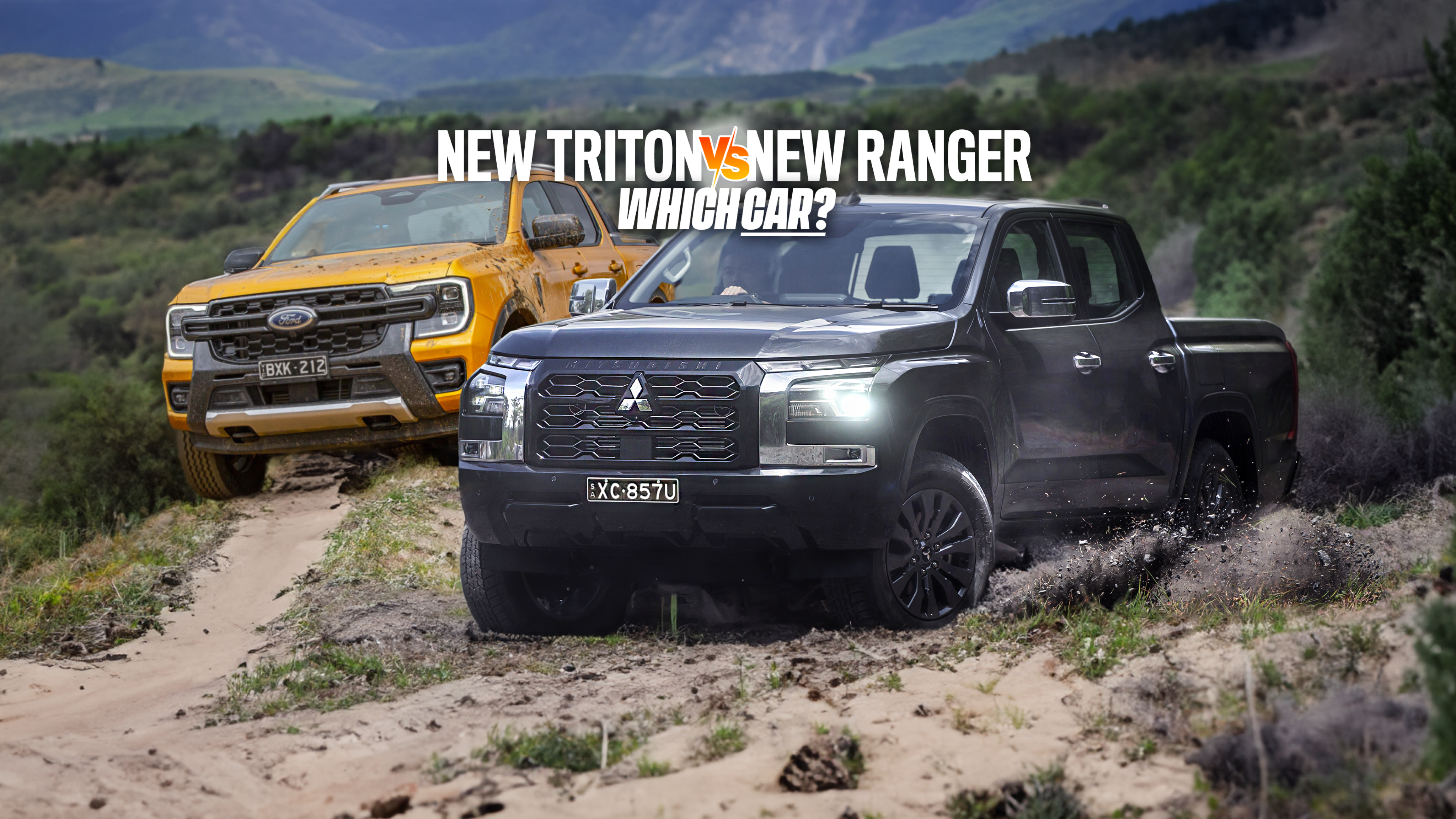
Finally Mitsubishi has revealed its new sixth-generation Triton ute in Thailand. This all-important new model is due to lob in Aussie owners’ driveways from February next year.
We run the ruler over the fresh Mitsubishi ute to see how it lines up against its key rival and the present dual-cab ute segment king, the Ford Ranger.
The new 4x2 and 4x4 ute range from Mitsubishi offers an all-new platform and significantly revised engine. First drives will be in January 2024; customer deliveries begin in February.

Our first sample of the new Triton will come in January 2024
Available initially in five variants (one 4x2, four 4x4) in four trim levels from GLX to GSR, in either Club Cab or Dual Cab (with single cabs to follow later), our first sample of the Triton will come in January 2024, with a target to get them on sale to the public by the first week of February. Exact specifications, including trim features, kerb weights, GCM and GVM are yet to be confirmed.
Meanwhile the Ford Ranger arrived last year as an all-new model with plenty of local development and boasts class-leading levels of equipment, a vast model line-up, with a variety of 4x2 and 4x4 models in either cab-chassis or pick-up form – and in single-cab, super-cab or double-cab configurations.
This article endeavours to take a close look at all the differences between the refined, class-leading Ranger and the incoming Triton. Let’s get into what makes these utes tick…
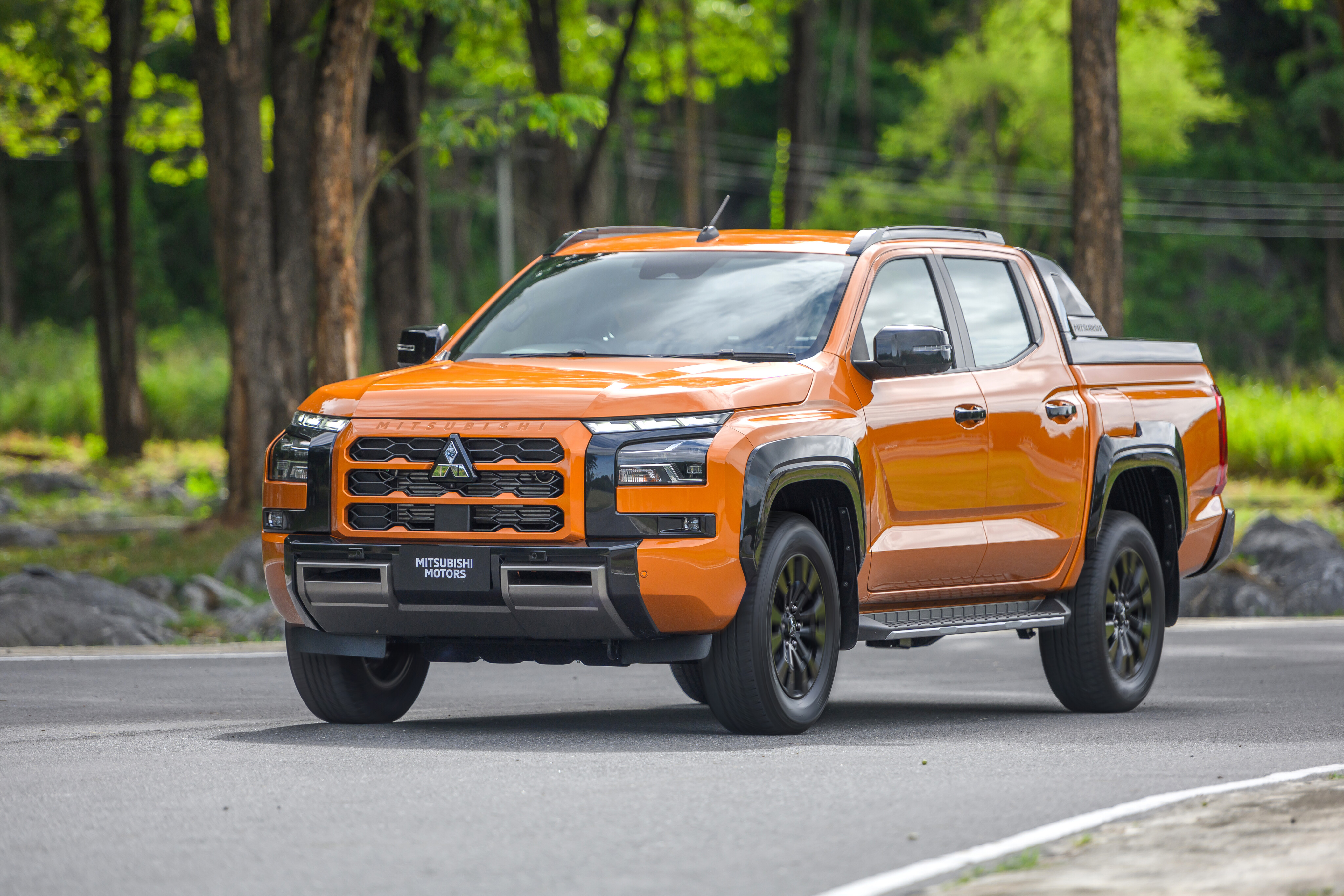
Mind the data gap
As the new Mitsubishi Triton is not due to arrive in Australia until early 2024, it is too soon for the full details to be confirmed for our local Triton models. Additional information, such as gross vehicle mass, payload, and exact trim specifications and features will be added as we draw closer to the Triton’s local release.
JUMP AHEAD
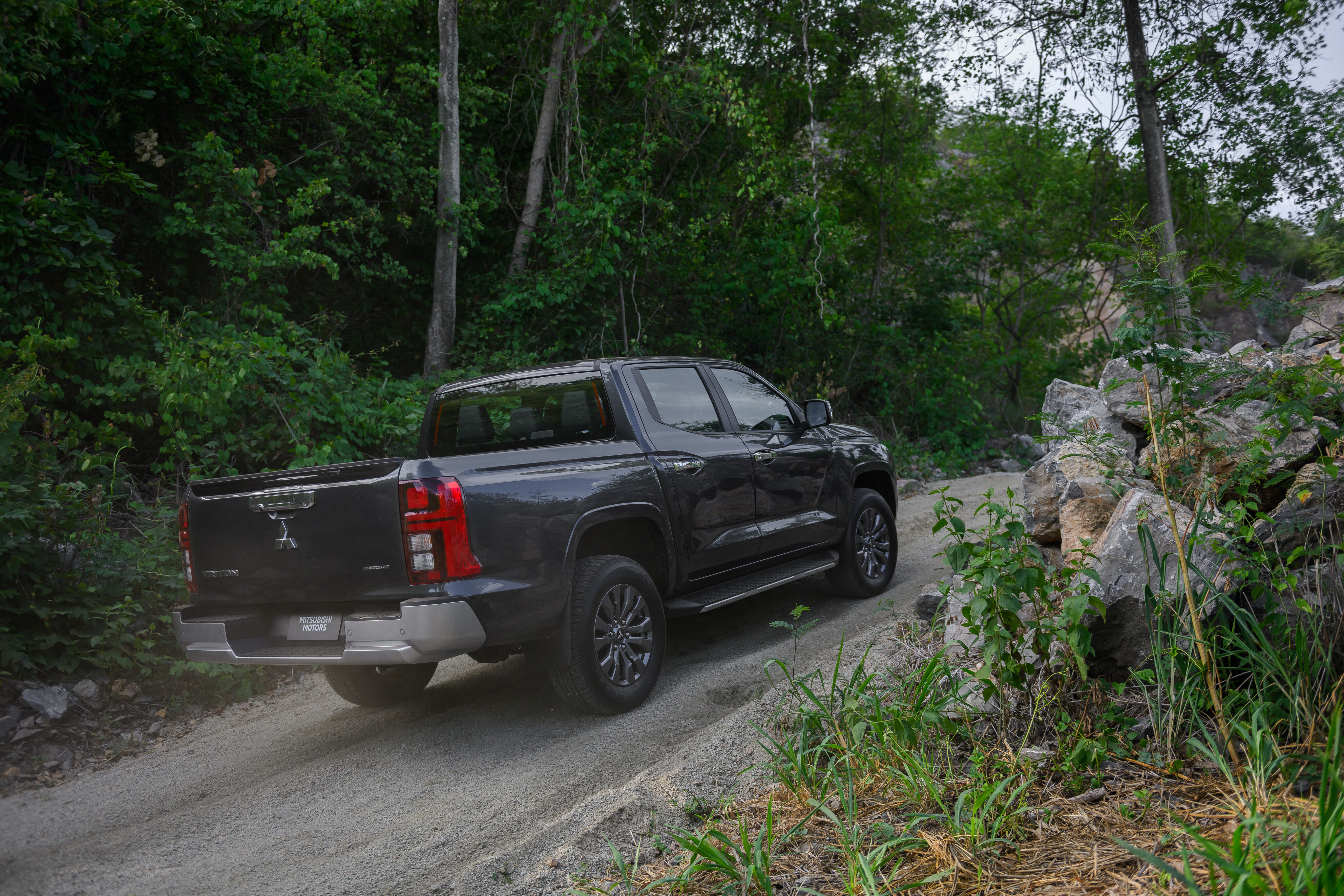
Get up to speed on the new Triton
The stories below will give you a guide to everything we learned about the new Triton when it was recently unveiled in Thailand.
All new stories published since then will be found on our Mitsubishi Triton model page here
2024 Mitsubishi Triton coverage
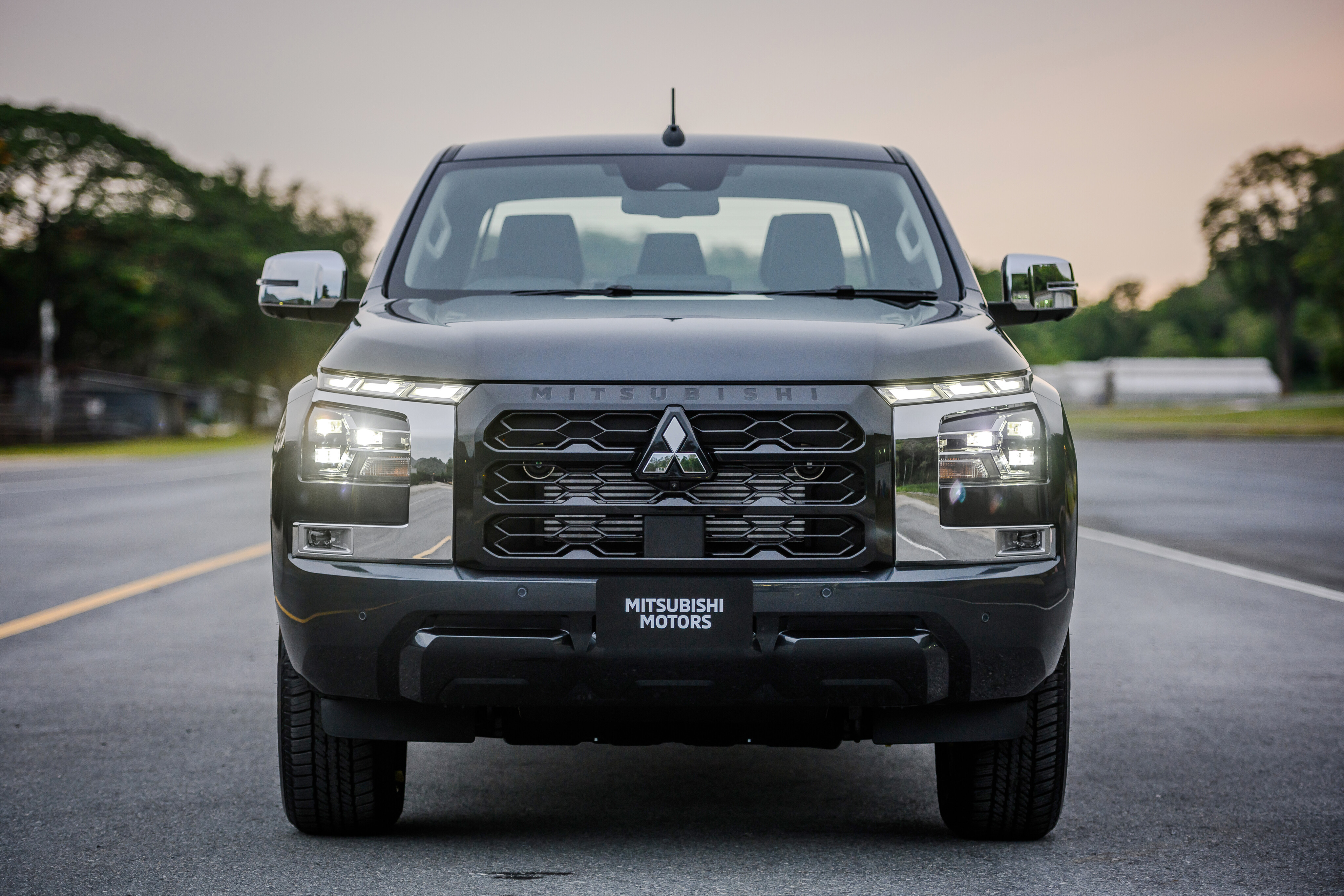
Dimensions
The new Triton doesn’t quite have the same footprint on the road as the larger Ranger, but appears to be bigger in tray dimensions.
The Triton arrives initially in dual cab and extended cab forms, with single cab to follow, with pick-up body and cab-chassis variations.
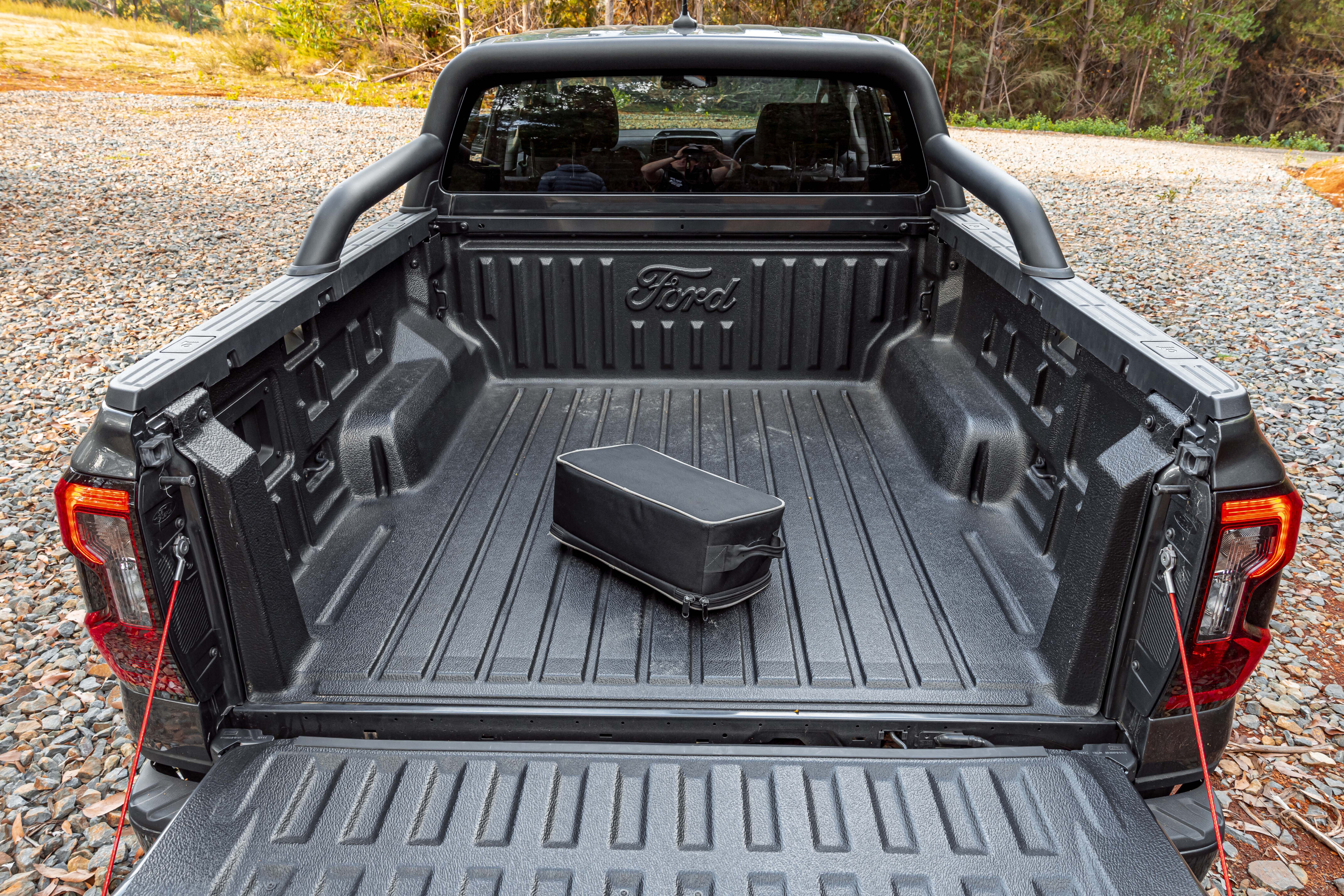
Initial dimensions suggest that despite the dual-cab Triton being smaller overall than Ranger, its tray length and width dimensions are bigger.
However, how capacity-eating tray liners influence this will have to be measured when we get the chance to compare them next year. Meanwhile, the Ranger appears to have the advantage on ground clearance and off-road angles.
| Dimensions (4x4 Dual Cab models) | 2024 Mitsubishi Triton | 2023 Ford Ranger Wildtrak 2.0 |
|---|---|---|
| Length | 5320mm | 5370mm |
| Width | 1865mm | 2015mm |
| Height | 1795mm | 1886mm |
| Wheelbase | 3130mm | 3270mm |
| Tray length/width | 1555/1545mm | 1464/1520mm |
| Ground clearance | 222mm | 234mm |

Chassis and Towing
The Triton's new ladder frame promises to be much stronger, with its bending rigidity up by 40 per cent, and torsional rigidity up by 60 per cent with a much greater cross-sectional area.
Mitsubishi says the larger vehicle’s weight increases have been minimised by boosting the ratio of high-tensile steel in its construction, while the body is lighter thanks to the use of a new 1180MPa high-tensile steel.
Mitsubishi has increased front dampers’ front stroke by 20mm with a higher upper mounting point. Beefier shock absorbers and lighter rear leaf springs at the rear will lower friction for improved ride compliance.
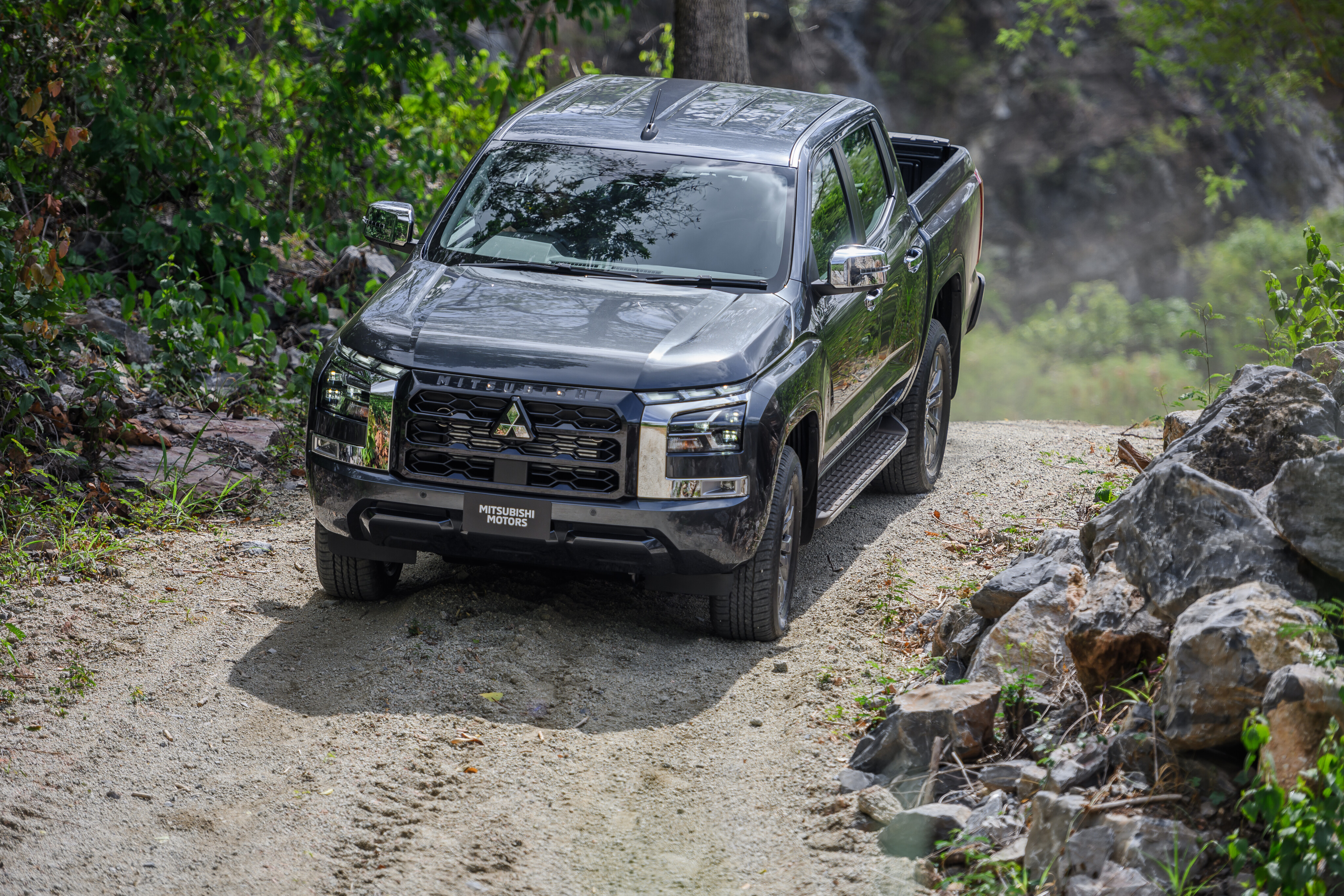
For the first time, the Triton adopts an electric power steering system in high-end variants.
This should result in a lighter feel around town that will weigh up at high speed. Mitsubishi has also worked to reduce kickback in the steering system – a common bugbear of the old car. Turning circle, at 12.4 metres, is better than Ranger.
Meanwhile the Triton has shrugged off the trend towards rear disc brakes, continuing with rear drum brakes, something Ford only persists with at XL and XLS grades – XLT and above get discs.
The relatively fresh Ford Ranger, with a 50mm longer wheelbase and 50mm wider track than its predecessor, also has a new ladder-frame chassis.
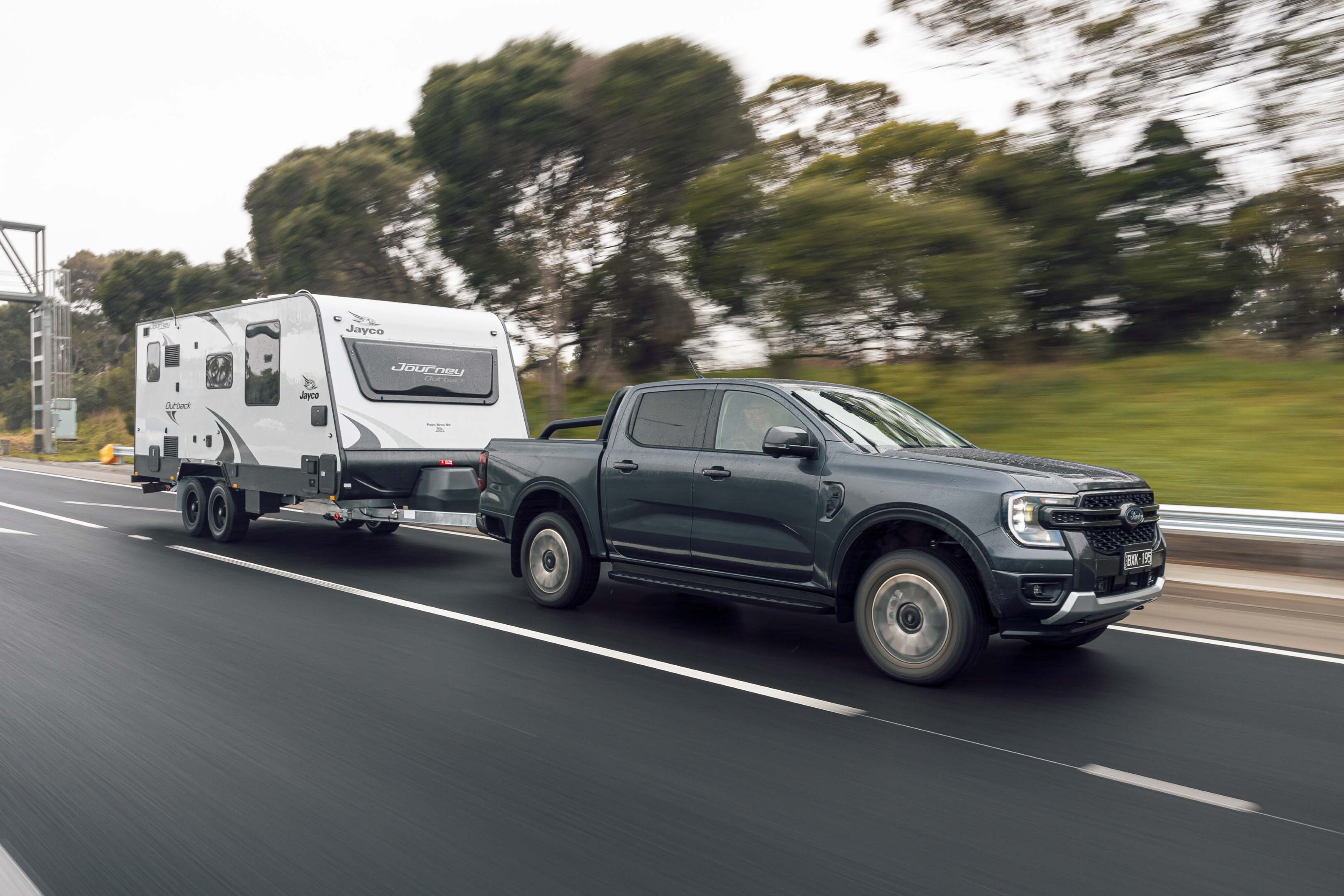
Payload ranges from 958kg to 1151kg in the Ford, while Mitsubishi is yet to reveal what the new Triton offers in payload masses.
It moves the rear shock absorbers further outwards to widen the ute’s footprint and thus improving dynamics and increasing wheel articulation. Moving the wheels outwards has also allowed the designers to fit a wider cargo tub that will accommodate a full-size shipping pallet.
The net result is one of the best ride and handling compromises of any ute so far, and will be a hard act for Triton to follow.
Payload ranges from 958kg to 1151kg in the Ford, while Mitsubishi is yet to reveal what the new Triton offers in payload masses.
Meanwhile the Japanese brand has announced an increased towing capacity for the Triton – it is up from 3100kg to 3500kg maximum braked capacity, matching the Ranger and other key players.
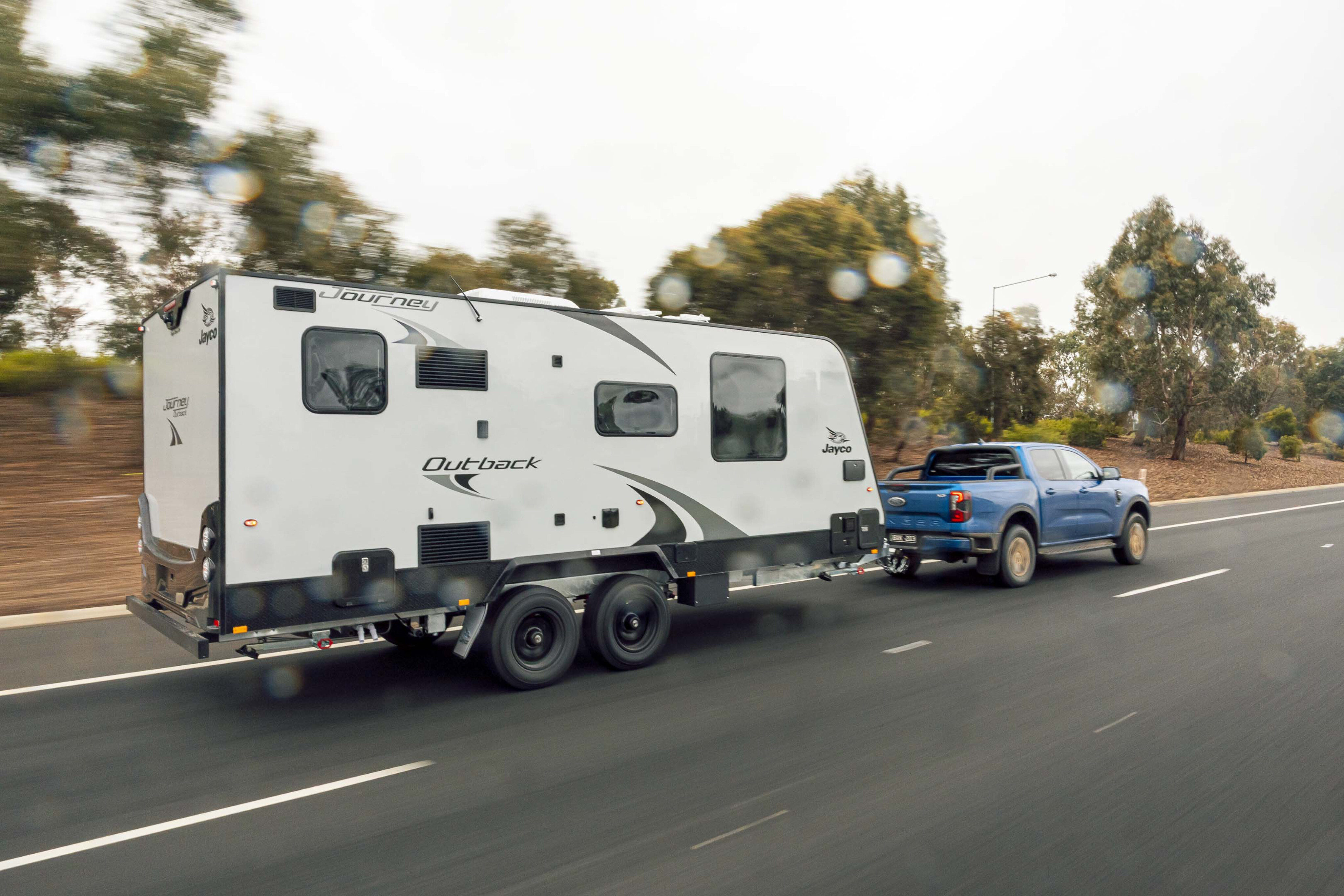
Engines
Under the bonnet of the new Triton is a 2.4-litre twin-turbo diesel four-cylinder producing 150kW/470Nm, with a six-speed automatic the only transmission at launch (a revised six-speed manual will follow).
The engine’s head and block are shared with the old Triton’s 2.4-litre, but gets new injectors and a second turbo, among other changes.
Although the Ranger is available in V6 diesel (or turbo-petrol V6 in Raptor) here we are comparing the Triton with the most obvious powertrain competitor in the Ranger series, the Bi-Turbo diesel 2.0 litre four-cylinder.
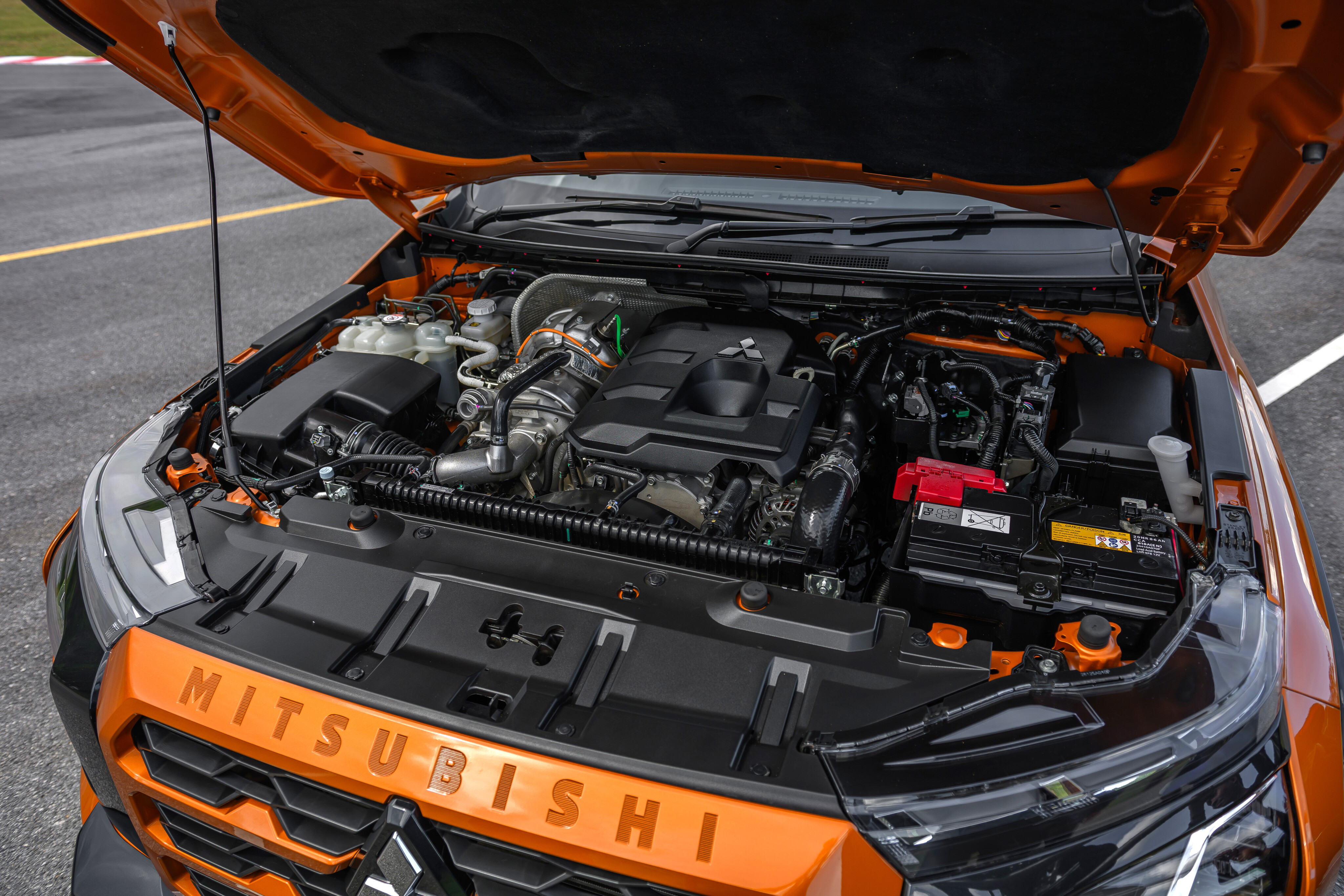
The power and torque figures are very close between the new Triton and the Ranger, with a slight advantage (4kW and 30Nm) to the Ranger, which has the added advantage of four more forward gear ratios than the Triton.
The Ranger’s 2.0-litre is quite fuel-efficient with a claimed 7.6L/100km combined figure, while the Triton’s fuel figures are yet to be revealed.
No kerb or payload weights have been released yet for new Triton, either. We do know that the Super Select II full-time/part-time dual-range system continues in upper-spec Tritons, giving an advantage over the part-time system in the Ranger 4-cylinder models (while Ranger V6 gets an on demand ‘full-time’ system).
| Specifications | 2024 Mitsubishi Triton | 2023 Ford Ranger Wildtrak 2.0 |
|---|---|---|
| Engine | 2.4L twin turbo diesel four cyl | 2.0 twin-turbo diesel four cyl |
| Transmission | Six-speed auto/man | 10-speed auto |
| Power | 150kW | 154kW |
| Torque | 470Nm | 500Nm |
| Claimed fuel use | N/A | 7.6L/100km |
| Kerb weight | N/A | 2329kg |
| Payload | N/A | 997kg |
| Towing Capacity (braked) | 3500kg | 3500kg |

Interior and Cabin Design
Gone is the current Triton’s dated interior, replaced with an airy, modern and high-quality cabin.
Both mid- and top-spec Tritons in Thailand will feature a 9-inch infotainment system similar to the Outlander midsize SUV, up from 7 inches. Satellite navigation, traffic sign recognition, wireless Apple CarPlay (and wired Android Auto), and connected-vehicle telematics such as vehicle status, and remote locking via a smartphone application are new, too – but the last feature is unlikely for Australia, at least initially.
The new-gen Triton retains a combination of analogue dash dials like the Isuzu D-Max, with an integrated 7-inch multi-information display – unlike the Ford Ranger, which has moved to fully digital dials.
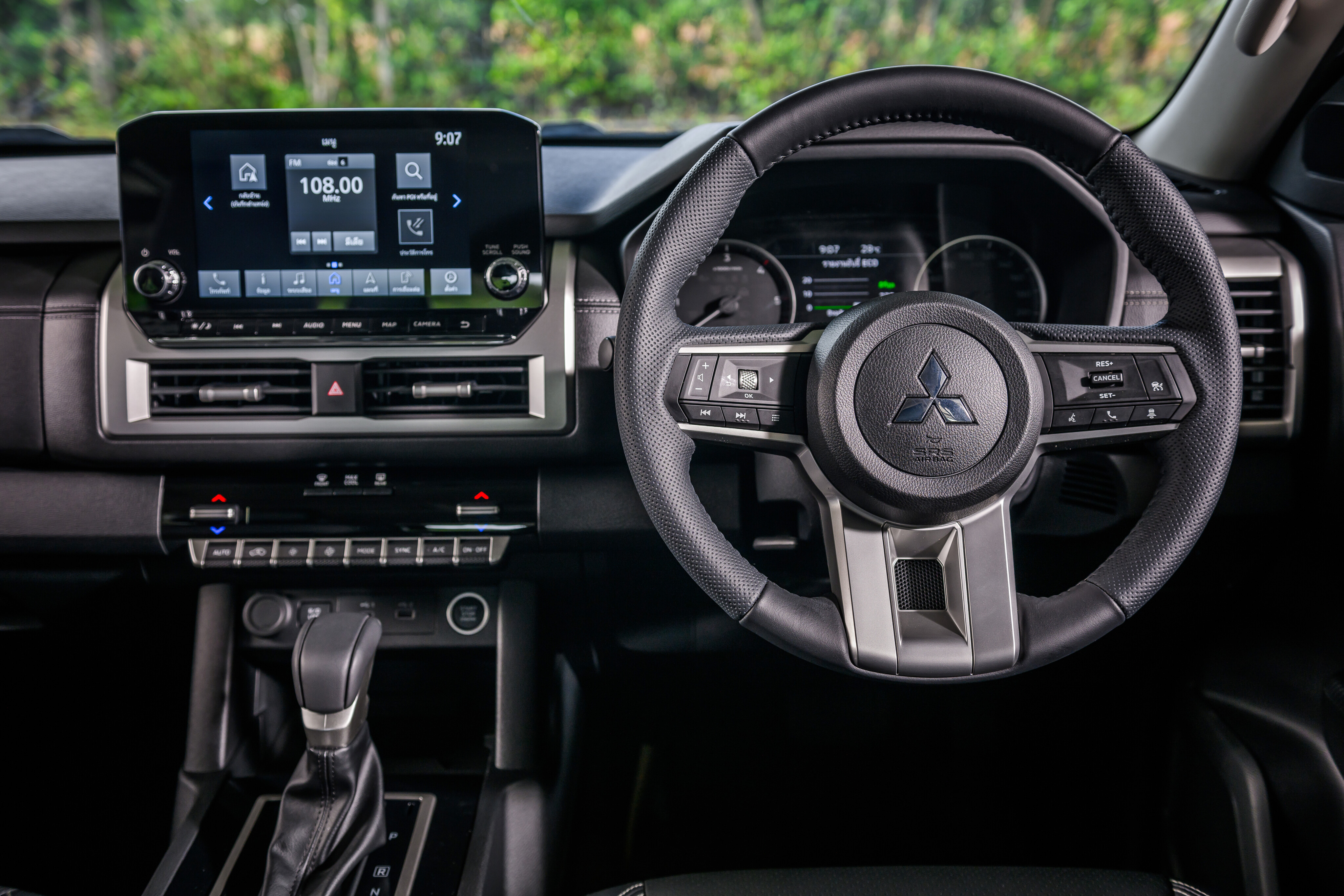
Mitsubishi claims to have improved the front seats with additional lower back support
Material quality is improved on the outgoing vehicle, claims Mitsubishi, and visually the introduction of dimpled, leather-appointed steering wheels and suede-cloth upholstery in top-spec models gives credence to its claims. As before, a full leather interior is optional on the flagship variant.
Mitsubishi claims to have improved the front seats with additional lower back support – a common complaint of the previous car – and a 20mm higher hip point. The new Triton’s more upright A-pillar aids ingress by providing a wider door aperture.
The 50mm width expansion translates almost directly into second-row shoulder room, with 49mm more than before, which should make for happier passengers.

The three-wide bench also has a fold-down armrest, while the air vents remain in the roof.
From the get-go, it’s obvious that the Ranger has a lot more invested in its interior features and technology, with large digital dash and infotainment screens, as well as comprehensive features such as trailer set-up on the info screen and even an integrated electric brake controller fitted on some models as standard.
We will have to wait to run the tape over the new Triton interior to see exactly how it compares for size and utility compared with Ranger.
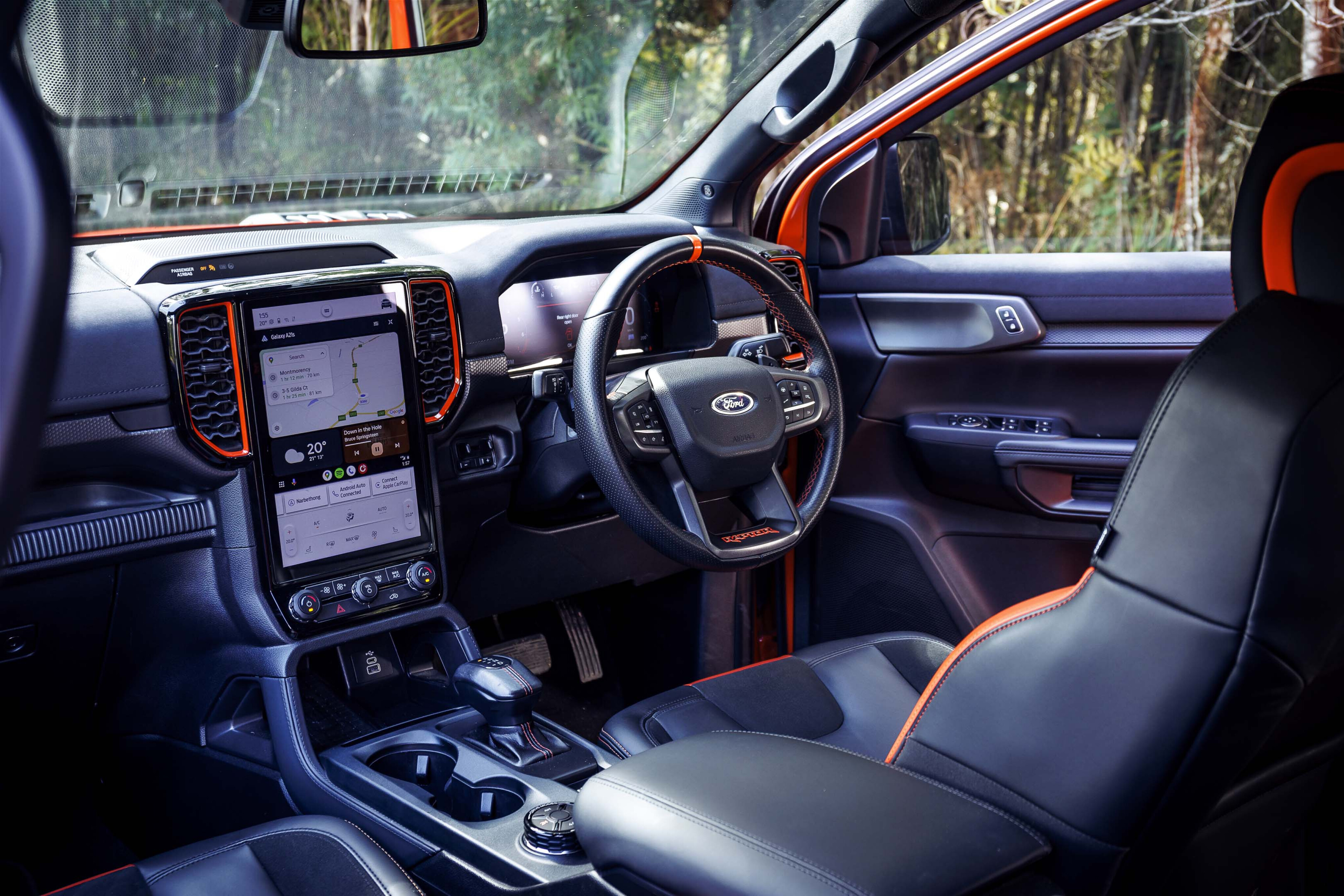
Pricing
The Triton has been a value entrant among Thai-built, Japanese-brand utes, but that may change with the new model as it steps up in technology and features.
Pricing remains up in the air as Mitsubishi continues to benchmark rivals to see where the Triton will sit in the market – but don’t expect it to cost the same as the existing vehicle.
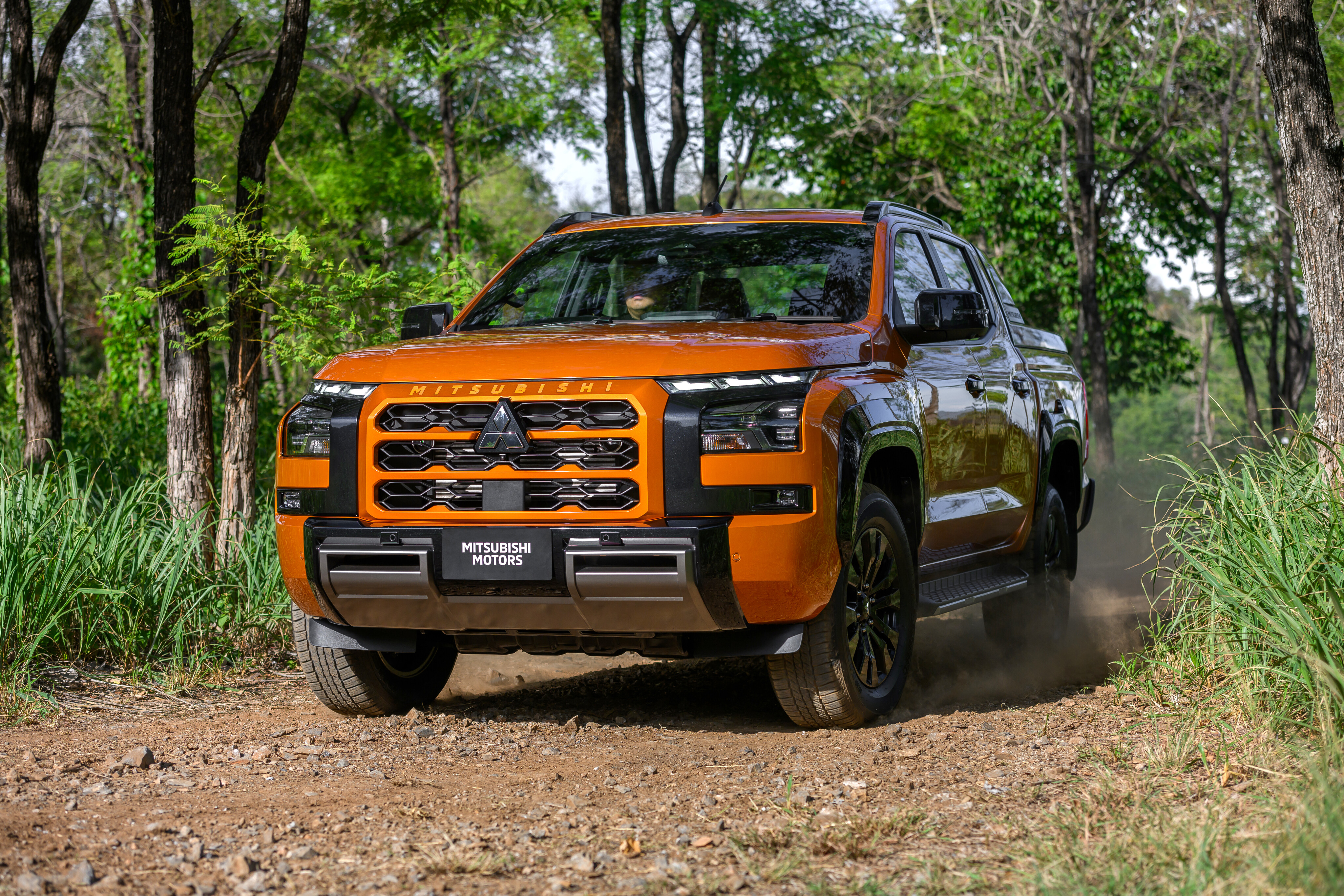
In its outgoing form, the GSR flagship currently costs $56,490 before on-road costs.
We’re wagering the new Triton GSR will move up to meet the main players like the Ford Ranger, so expect a circa-$60K price on the premium model.
Meanwhile, the Ford Ranger has a bewildering choice of models, unlikely to be equalled by the Mitsubishi -- even when the taps are turned on for all Triton variants to be sold in Australia. The Ranger begins in 4x2 single cab-chassis at $36,180, then moves all the way up to $86,790 for its off-road race-ready Raptor dual cab (prices before on-road costs).

COMMENTS